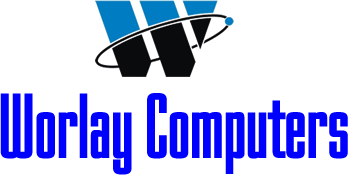ALM — software lifecycle management — is the process of managing the life of a product from preliminary ideas through end of life. In addition, evaluation are carried out to gauge the specter of these stress occasions on the financial institution earnings, capital level, enterprise activities as well as the steadiness sheet composition. The capacity for groups to collaborate ensures that every employee understands the project and its stage. ALM instruments permit staff to track strategies, adjustments, requirements and project status in Real Time, no matter their location.
- Development of the product begins once the team agrees on the necessities.
- There are processes that the thought must go through before it can turn out to be a product.
- As a end result, case necessities are sometimes in a hierarchical tree structure, with each node representing a more particular sub-requirement for a extra common father or mother node.
- This helps be sure that the created product satisfies all defined wants and is simple to use, take a look at and deploy.
- No matter which methodology you employ, the ideas of ALM — integration, collaboration, and visibility — hold true.
Application lifecycle management helps companies achieve excessive efficiency and acquire a competitive edge by accelerating workflows and making certain that top-quality merchandise get deployed. By doing ALM with the proper instruments, you’ll be succesful of effectively plan your launch and get the greatest possible product to market on time. ALM covers the whole lifetime of an utility, from the initial concept till the top of life. Measuring liquidity position via liquidity gap evaluation continues to be one of the most widespread device used and represents the muse for state of affairs evaluation and stress-testing. Today, ALM strategies and processes have been prolonged and adopted by corporations aside from financial institutions; e.g., insurance.
Measuring Liquidity Risk
The vast majority of banks function a centralised ALM model which enables oversight of the consolidated balance-sheet with lower-level ALM models specializing in enterprise models or legal entities. Often an ALM approach passively matches belongings against liabilities (fully hedged) and leaves surplus to be actively managed. These instruments vary from dedicated ALM products that monitor an software from inception to completion, automatically sorting recordsdata into logical buckets, to easy wikis that require group members to record modifications manually. These examples are programmatically compiled from numerous on-line sources to illustrate current usage of the word ‘alms.’ Any opinions expressed in the examples don’t symbolize those of Merriam-Webster or its editors.
This integration additionally benefits organizations by improving communication and collaboration and aligning software program aims with any business value or company aim. Testing and quality assurance often overlap with the development stage. Testers ought to begin preparing their take a look at circumstances and testing environments before the product is formally launched. Testers must also be out there to provide feedback on the applying throughout development. Furthermore, integration and unit checks ought to be included into programming activities.

But ALM also now seeks to broaden assignments corresponding to international change danger and capital management. According to the Balance sheet management benchmark survey conducted in 2009 by the audit and consulting firm PricewaterhouseCoopers (PwC), 51% of the forty three leading monetary establishments members have a look at capital management of their ALM unit. Asset and liability administration practices have been initially pioneered by monetary institutions during the Nineteen Seventies as interest rates became more and more volatile. Continuous maintenance and enchancment of the product happen after deployment to monitor and manage the efficiency of the released application. During this stage, the staff resolves any remaining bugs while planning and prioritizing new updates. The deployment stage involves the release of the product to users.
At the start, the event staff should break down the application requirements into items and phases to create a development plan. Many improvement teams lack complete visibility across the project lifecycle. Requirements definition and design — sometimes often identified as governance — is a vital stage of the applying lifecycle.
Meaning Of Alms In English
It additionally helps developers adjust improvement processes and targets during the software lifecycle. Finally, ALM helps make certain that all teams — including growth, operations and security — can collaborate successfully to produce the absolute best software. With a greater software lifecycle administration device, groups can have visibility into growth status. They also have a single supply of truth providing any related context they need to make the best choices rapidly.
As these devices wouldn’t have a contractual maturity, the bank needs to get rid of a transparent understanding of their period level within the banking books. The ALM tool allows users to outline project requirements and develop user tales, which can then be prioritized, scheduled and broken down into detailed duties used for useful resource tracking. Resource monitoring analyzes how properly a corporation uses its assets all through the app’s lifecycle. ALM software customers can also attach paperwork, screenshots and URLs to all artifacts and customise all graphs and reports in varied formats — including Adobe Acrobat and HTML. ALM also improves groups’ decision-making talents when coping with getting older software program.

Numerous ALM tools can be found for tracking utility modifications. Maintenance is regularly the longest stage of software lifecycle management, however it can additionally require the least participation from the development team if earlier steps had been effective. ALM offers a framework for setting requirements and establishing processes, governance and methodologies earlier than deploying software.
Visibility
While ALM covers the complete software lifecycle, SDLC only focuses on the software program development process. In other words, ALM includes all five stages of the app’s lifecycle — necessities, improvement, testing, deployment and maintenance — however SDLC only includes one stage — growth. ALM helps companies set and meet applicable requirements for initiatives. ALM also improves the event process by incorporating frequent, thorough testing.
Consequently, utility lifecycle administration consists of software development lifecycle, however SDLC only focuses on a fraction of ALM. ALM instruments automate software growth and Deployment processes, help be certain that compliance is achieved and maintained, and create a standardized setting the place all teams concerned within the application lifecycle can communicate and collaborate. During the formal testing and high quality assurance stage, testers must verify that the appliance fulfills the necessities outlined within the first stage of the method. Testers must also verify for all other stakeholder expectations that the app might need to help throughout its lifecycle.
This course of varies based on the applying sort because each product type requires totally different attributes and specifications. For example, software as a service (SaaS) apps should be deployed on the company’s internal servers, whereas users can entry web apps through the internet. When defining requirements, all stakeholders collect to declare what they want from the applying to assist their enterprise circumstances. A design of the applying is created primarily based on their expressed needs. Requirements can embrace a spread of factors, from the enterprise needs of the stakeholders to compliance and governance necessities.
ALM tool dashboards can be customized, and the reporting that seems may be customized to greatest benefit the specific consumer. Specifying necessities often happens top-down, that means the wants start with essentially the most general and move into the extra specific and detailed. As a end result, case necessities are sometimes in a hierarchical tree construction, with each what does alm mean node representing a more particular sub-requirement for a extra basic father or mother node. However, different growth approaches, such because the iterative Agile improvement process, use much less hierarchical structures to listing necessities, with the defined wants recognized as use instances. Furthermore, main software program corporations deploy updates for products daily.

Effective ALM comes with the benefit of quality merchandise and sooner releases. ALM comes with a number of advantages in your development staff — and your business. A lot happens within the life of a product (or application or software). This is the concept of Fund Transfer Pricing (FTP) a process inside ALM context to ensure that business traces are funded with adequate tenors and which would possibly be charged and accountable in adequation to their present or future estimated scenario. Note that the ALM coverage has not the objective to skip out the institution from elaborating a liquidity policy. In any case, the ALM and liquidity insurance policies have to be correlated as decision on lending, investment, liabilities, equity are all interrelated.
Here are the top four you’ll be able to count on when you do ALM successfully with a dedicated application lifecycle management tool. As an echo to the deficit of funds ensuing from gaps between property and liabilities the financial institution has additionally to address its funding requirement through an efficient, sturdy and steady funding mannequin. To do so, ALM group is projecting future funding needs by tracking via maturity and cash-flow mismatches hole threat exposure (or matching schedule). In that scenario, the risk relies upon not solely on the maturity of asset-liabilities but in addition on the maturity of every intermediate cash-flow, including prepayments of loans or unforeseen usage of credit strains. As defined in the subsequent section, the ALM process makes sure that all features for all stages of software lifecycle management are explicitly established and managed.
This stage also includes full integration testing, and all points or bugs discovered and reported could also be addressed by the development staff. Application lifecycle management (ALM) is an built-in system of individuals, tools and processes that supervise a software utility from its preliminary planning and development, through testing and maintenance, and into decommissioning and retirement. By combining and organizing the weather https://www.globalcloudteam.com/ of an utility’s lifecycle, ALM improves product high quality, optimizes productiveness and eases the management and maintenance burden for related services. For simplification treasury administration could be lined and depicted from a company perspective looking at the administration of liquidity, funding, and financial threat;
Asset And Liability Administration
And integrating ALM tools into your growth process might be one of the simplest ways to get visibility — and traceability — throughout the event lifecycle. It is concentrated on a long-term perspective somewhat than mitigating instant dangers and is a means of maximising property to meet complex liabilities which will improve profitability. Asset and legal responsibility administration (often abbreviated ALM) is the apply of managing financial risks that arise because of mismatches between the belongings and liabilities as part of an funding strategy in financial accounting. Software growth lifecycle (SDLC) refers back to the processes or procedures involved in creating a high-quality software program product. Application lifecycle management is similar to SDLC, however it incorporates a bigger vary of processes. The integrated system created by ALM is more efficient than a collection of unconnected tools and processes unfold throughout various teams.
In smaller organizations, the ALM process may be addressed by one or two key persons (Chief Executive Officer, such because the CFO or treasurer). A extensive variety of improvement methodologies can occur during this stage. The most popular are sequential — for example, the Waterfall mannequin — or iterative — corresponding to Agile development.

